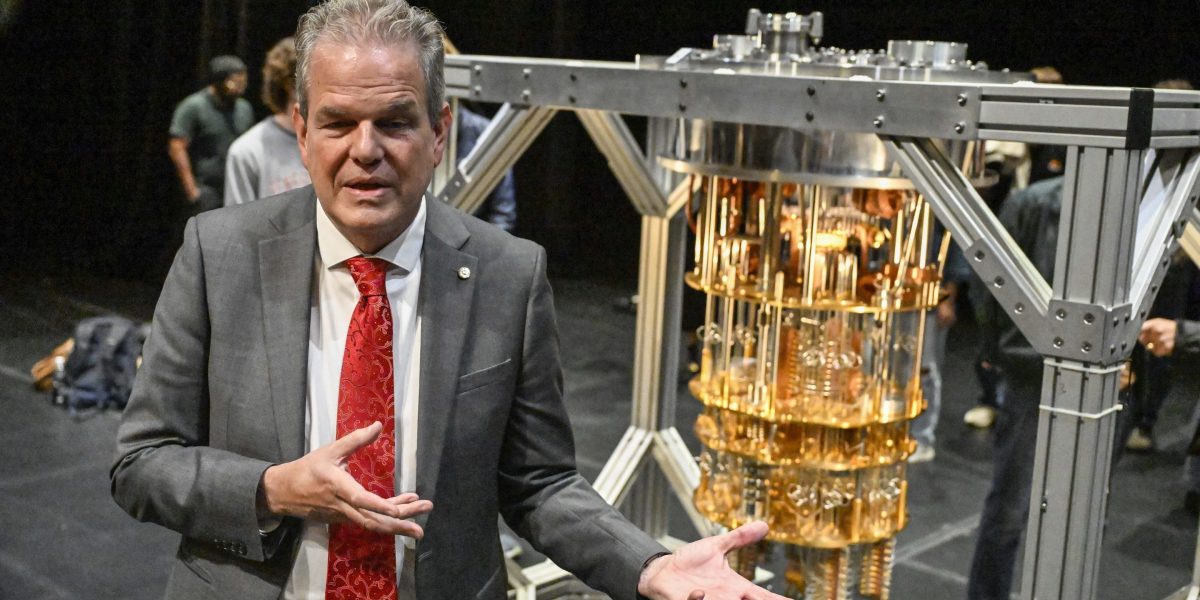This post was originally published on this site
https://fortune.com/img-assets/wp-content/uploads/2024/04/AP23286749817863-e1712343425315.jpg?w=2048
Nvidia, now one of the world’s most valuable companies with a $2.2 trillion market cap, was formed in an unexpected place. Exactly 31 years ago today, Jensen Huang, Chris Malachowsky, and Curtis Priem met at a Denny’s restaurant, where Huang had once worked as a dishwasher and busboy.
While Huang has been the face of the world’s premiere advanced chip manufacturer, the company’s other two cofounders still played an important role in Nvidia’s success. Priem served as the chief technical officer for a decade before retiring in 2003—and he could’ve been the 16th-richest person in the U.S. if he hadn’t sold most of his shares in Nvidia after it went public in 1999.
Indeed, if Priem had held on to all of his shares, he’d be worth $70 billion, according to a Forbes report, but he’s only worth an estimated $30 million as of November 2023. Priem is the forgotten cofounder of Nvidia mostly due to his early retirement, stock sellout, and move off the grid—but he is a remarkable inventor with almost 200 U.S. and international patents as well as a philanthropist who has donated hundreds of millions of his fortune to causes he cares about.
How did Priem get involved with Nvidia?
Priem got his start in electrical engineering at IBM and Sun Microsystems, where the programming language Java was invented. Both Priem and Malachowsky were working at Sun Microsystems when they met with Huang at what was one of Denny’s “most popular” locations in Northern California to discuss “creating a chip that would enable realistic 3D graphics on personal computers,” according to an Nvidia blog post.
“Chris and Curtis said one day they’d like to leave [Sun Microsystems], and they’d like me to go figure out what they’re going to leave for,” Huang said during a recent interview with Stanford Graduate School of Business. “They insisted I figure out with them how to build a company.”
Early on, Priem architected the blueprint that allows engineers to design algorithms for Nvidia’s chips, according to Forbes. These chips now power a slew of technology including AI systems and video game graphics. Because Priem was very much the technical lead behind Nvidia’s original chip designs, it’s no surprise that he stayed in the shadows as the company grew in popularity—and market value.
“There was a saying at Nvidia to never put Curtis in front of a camera, and never put Curtis in front of a customer,” Priem told Forbes.
Why did Priem abandon Nvidia?
By 1999, Nvidia went public with a $1.1 billion market cap, and just months later he established the Priem Family Foundation. Priem put more than three-quarters of his 12.8% (at IPO) Nvidia stake in the foundation. In today’s share count, that would’ve been about 100 million shares. Nvidia declined a Fortune request for comment on Priem’s involvement with the company and why he sold off his shares and retired.
By 2006, Priem had sold all of his shares in Nvidia and gone off the grid, moving to a $6 million home in Fremont, Calif., according to Forbes. Now he’s just focused on writing “manifestos” on solving problems such as “repairing the earth,” although none have been published anywhere.
Because Priem has essentially run out of money from selling all of his Nvidia shares and going off the grid, his foundation, which once donated to causes including the Nature Conservancy, holds about $160 million in assets and is set to shutter by 2031, according to Forbes.
But a massive share of his wealth went to his alma mater, Rensselaer Polytechnic Institute, where he has donated $275 million since 2001, which accounts for 40% of RPI’s total gifts during that time period. RPI didn’t respond to requests for comment from Fortune regarding Priem’s donations, which have gone to projects at the school including a new concert hall.
Although Priem’s continued involvement with RPI became his “purpose and my sanity,” he still has regrets about selling his Nvidia stock.
“I did a little crazy thing,” Priem told Forbes. “And I wish I’d kept a little bit more.”



